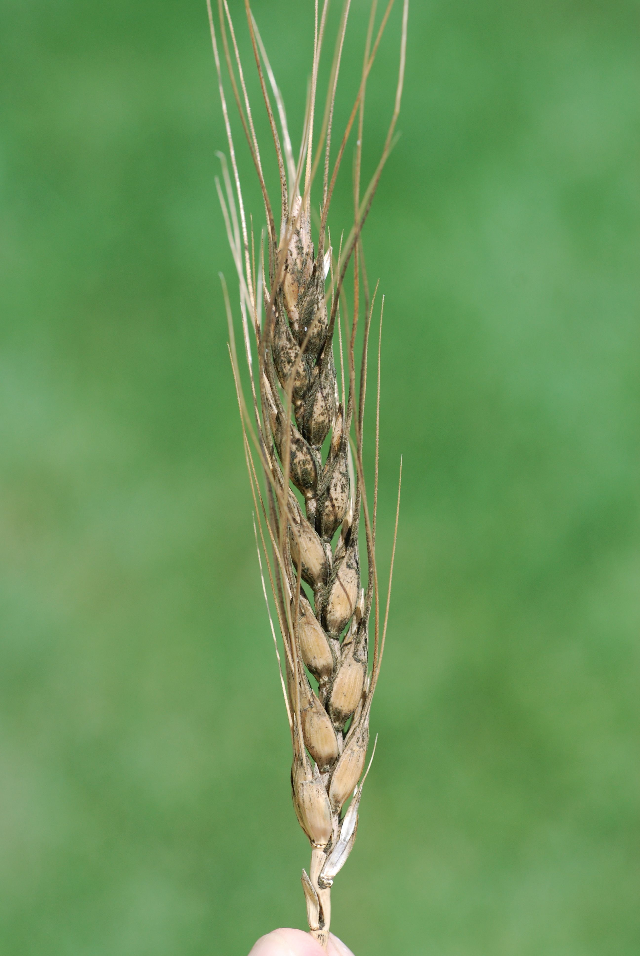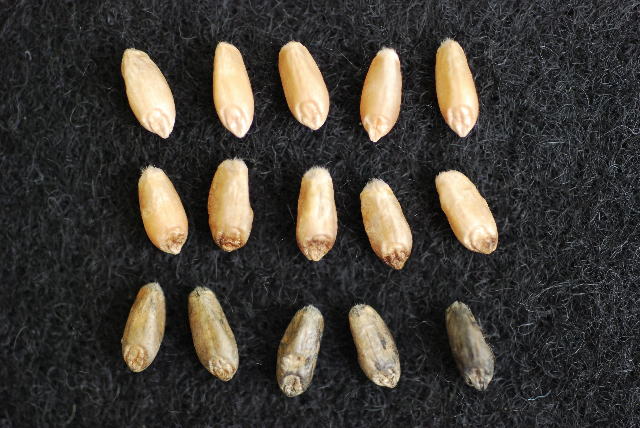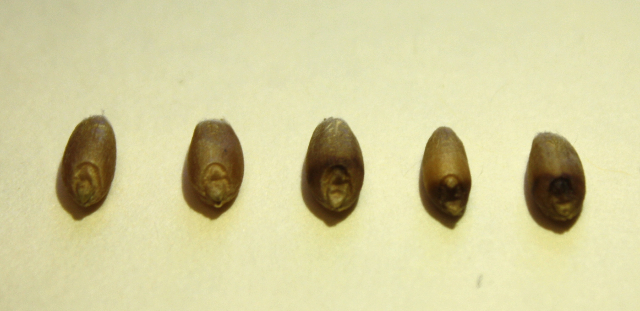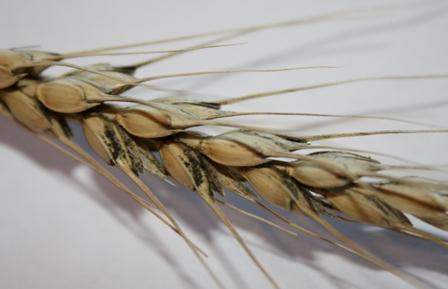Sooty Head Molds/Black Point
Sooty molds and black point in wheat
With multiple rain delays slowing the progress of wheat harvest, some areas of the state are reporting sooty molds and grain with a discoloration known as black point. Black point has been reported in fields throughout northwest Kansas and eastern Colorado. This is due to the repeated rainfall that some areas have received during this harvest season. Both of these problems are caused by molds that grow on the mature wheat.
Sooty head molds
Sooty head molds are characterized by a dark green or black mold growth on the surface of mature wheat heads. These molds are part of a naturally occurring complex of organisms that help to decay dead plant debris. Sooty molds are most common when mature wheat is subjected to repeated rains and delayed harvest. This disease also may affect plants that have been damaged by root rot.



